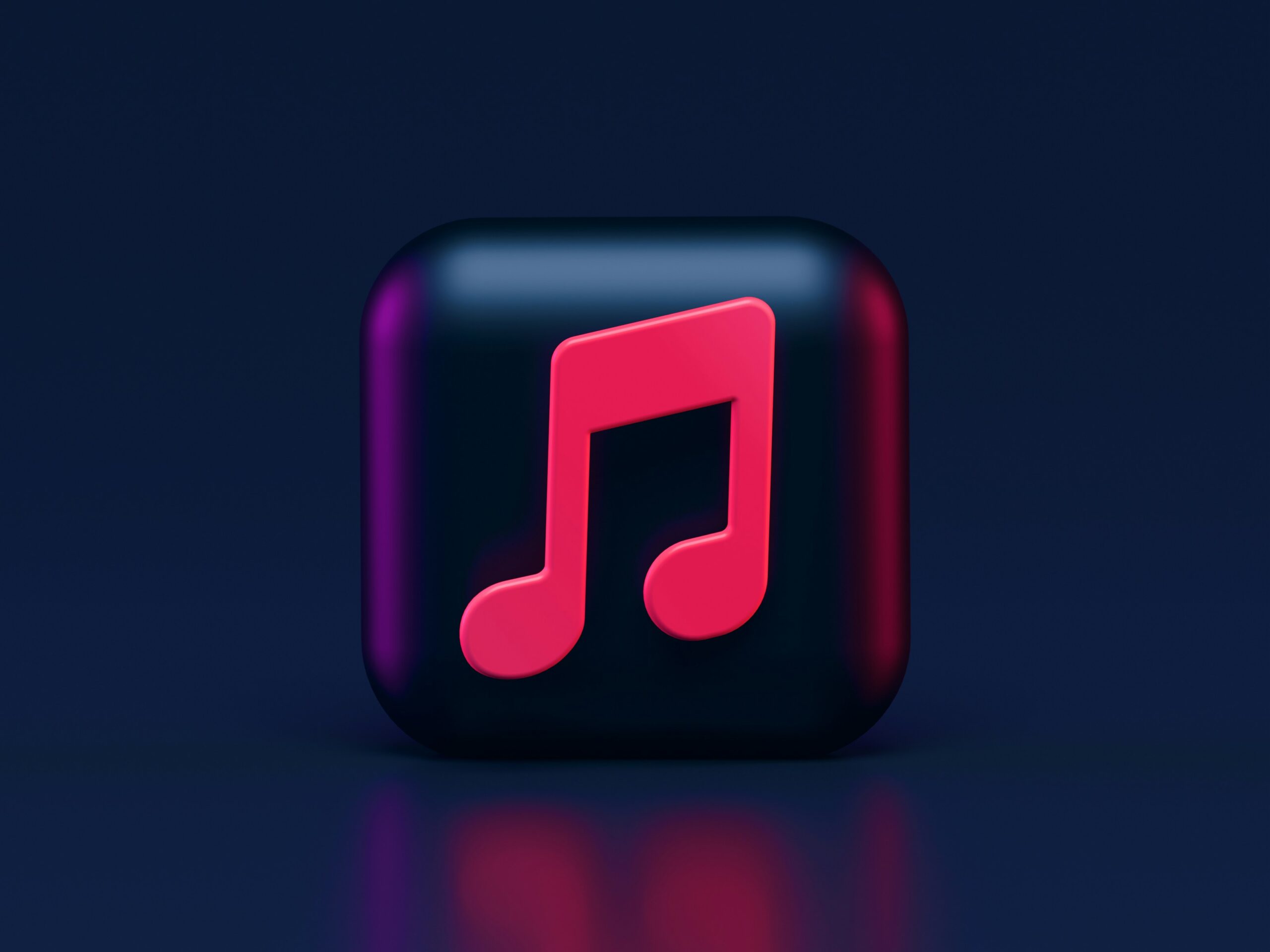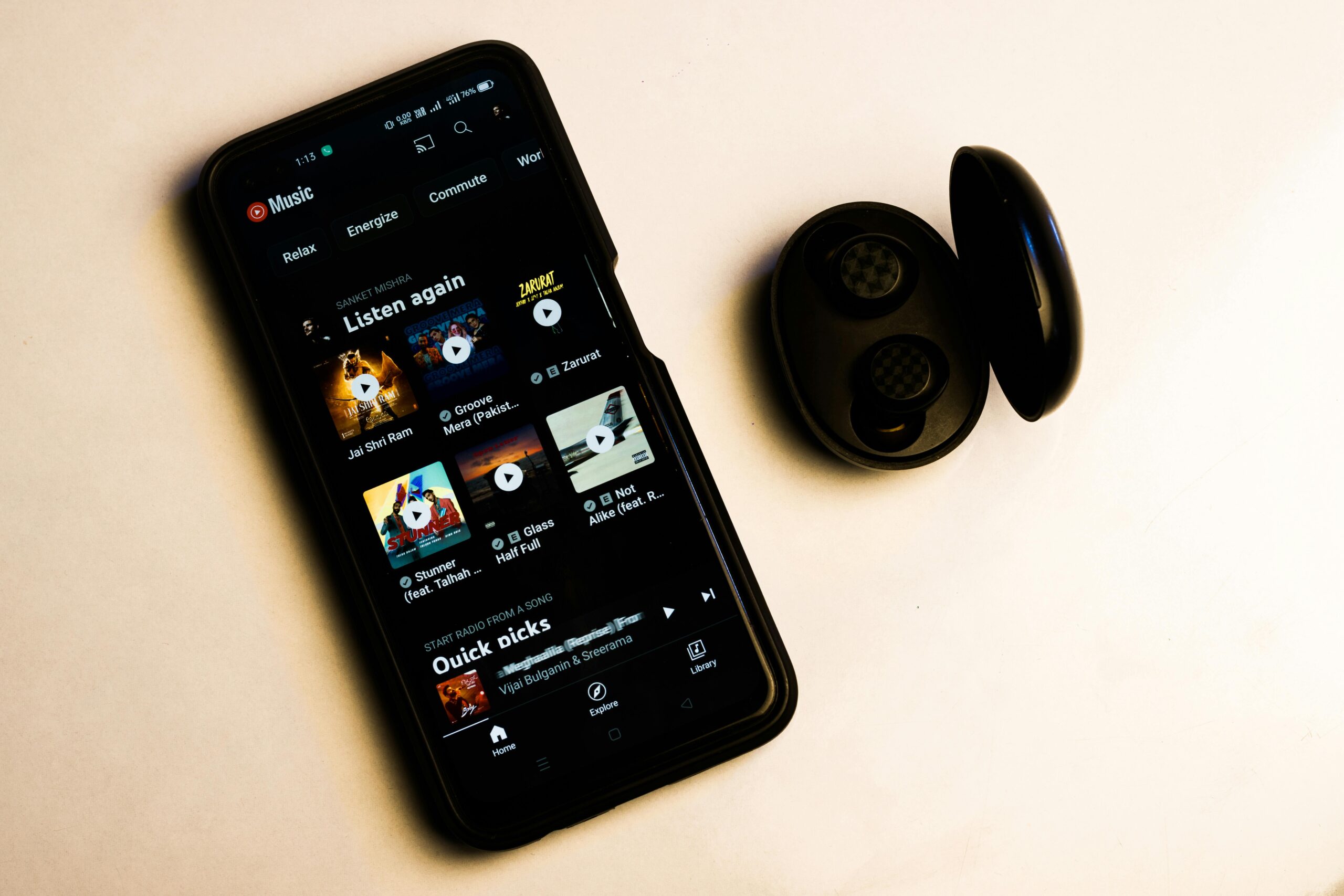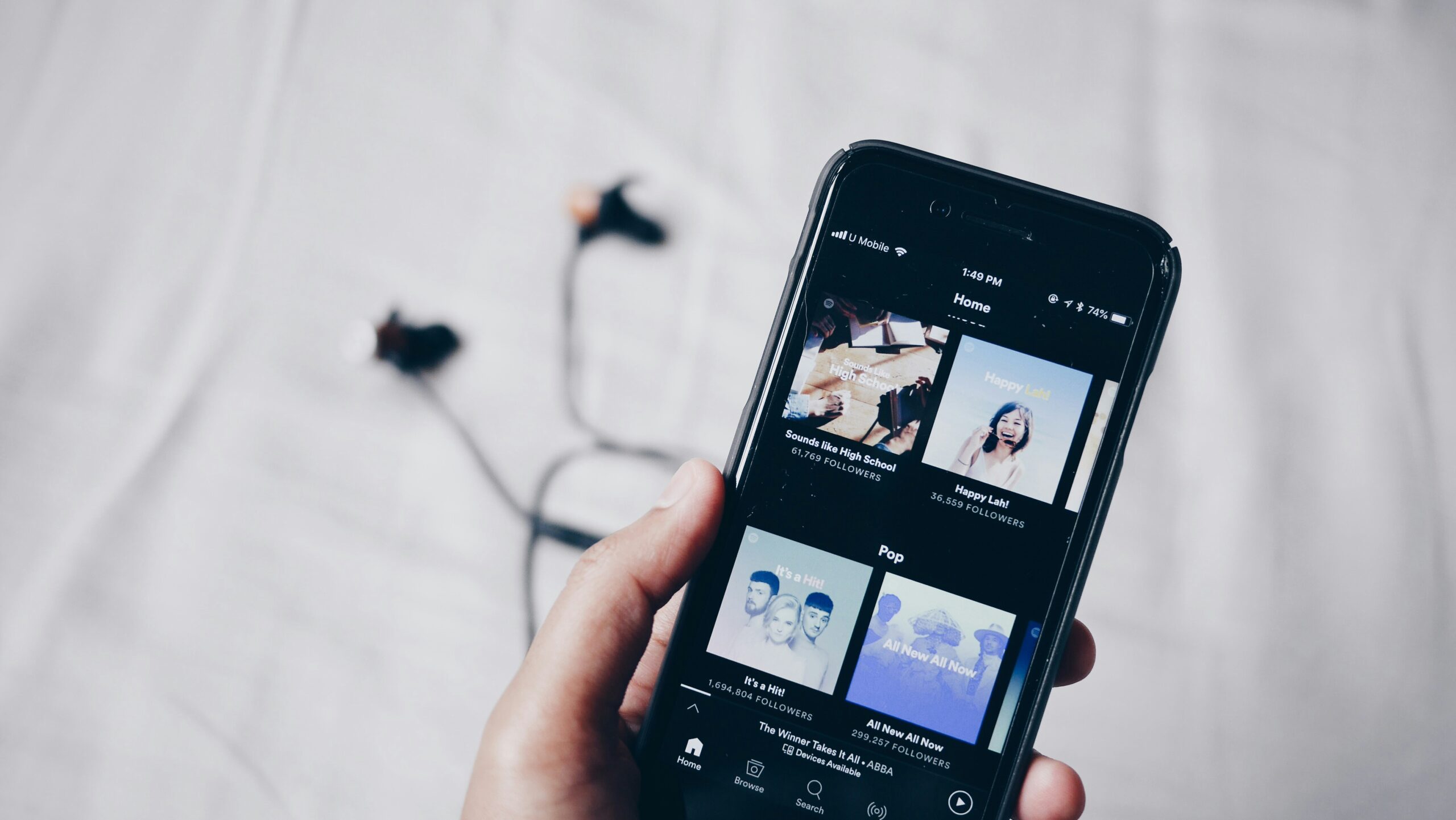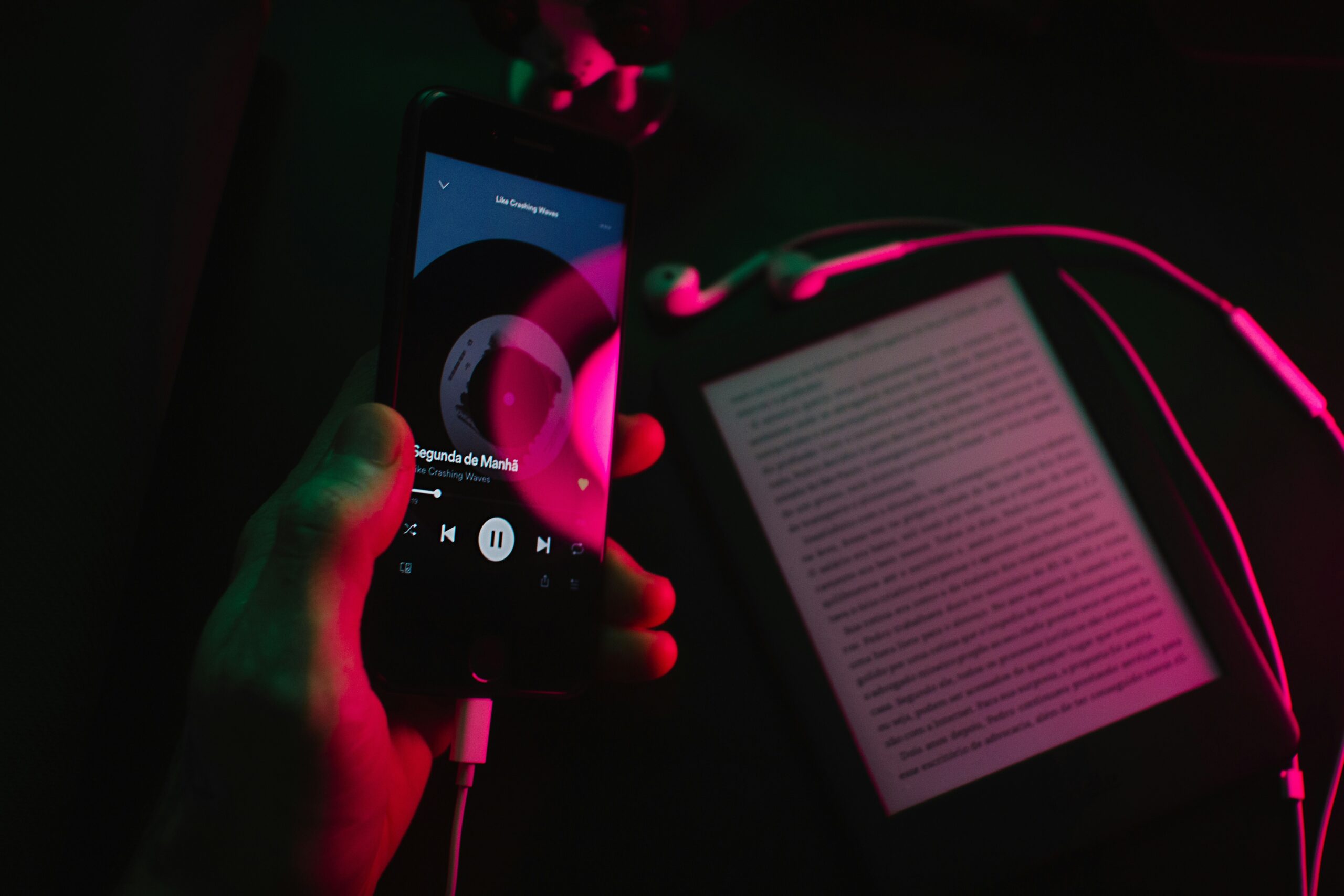The music streaming industry is thriving, and developing your own music app can be a rewarding venture. Whether you’re aiming to compete with giants like Spotify or cater to a niche market, this guide will walk you through the essential steps, features, and strategies to successfully create a music streaming app.

Why Build a Music Streaming App?
Before diving into the development process, it’s important to understand why music streaming apps are such a profitable business model. Services like Spotify and Apple Music are already cornering the market, but there is still room for innovation and differentiation, especially for niche audiences. Whether it’s a specialized genre, higher audio quality, or a focus on independent artists, a well-executed music streaming app can generate substantial revenue and carve out its own space in the market.
Key reasons to create a music streaming app:
- Capitalizing on market growth: with the continuous rise of on-demand music consumption, building a music streaming app presents a lucrative opportunity to tap into a growing market.
- Filling gaps in the market: many niches, such as indie music, local artists, or specialized genres, remain underserved.
- User experience innovation: you can introduce innovative features such as AI-powered music recommendations, social listening, or live concert streaming to enhance user engagement.
- Revenue potential: with the right monetization strategies, a music app can generate significant revenue through subscriptions, ads, and partnerships.
Building a music streaming app is not just a creative opportunity; it’s also a profitable one, with the potential to tap into a rapidly expanding market and create a unique space for your brand.
5 Most Popular Music Streaming Apps to Follow the Example of
As the music streaming market continues to grow, several apps have emerged as leaders in the industry. These platforms have revolutionized the way people listen to music, offering massive libraries, personalized recommendations, and a seamless user experience. Here’s a look at five of the most popular music streaming apps that are shaping the industry.
1. Spotify
Spotify is the undisputed leader in the music streaming world. Launched in 2008, it has become the go-to platform for music lovers, offering a vast catalog of songs, podcasts, and exclusive content.
2. Apple Music
Apple Music launched in 2015 and quickly became one of the biggest players in the music streaming market. It offers a vast music catalog, curated playlists, and exclusive artist content.
3. YouTube Music
YouTube Music, launched in 2015, is Google’s music streaming service designed to compete with other platforms like Spotify and Apple Music. It integrates seamlessly with YouTube, giving users access to official tracks, remixes, live performances, and user-generated content.
4. Amazon Music
Amazon Music is a comprehensive music streaming service that provides access to millions of songs. Amazon Music integration with Amazon’s ecosystem and high-quality audio options make it a strong contender in the music streaming space.
5. Tidal
Tidal is a high-fidelity music streaming service that differentiates itself by offering exclusive content and superior audio quality. It is known for its commitment to providing lossless audio and supporting artists with fair compensation.
Each of these music streaming apps has carved out its own niche, offering unique features and benefits for different types of users.

Steps to Build a Music Streaming App
Now that we’ve established the reasons for entering the music streaming market, let’s break down the process of building a music streaming app. This process is both complex and rewarding, requiring attention to detail at every step of development.
Step 1: Conceptualize Your App Idea
The first step in creating a music streaming app is conceptualizing your idea. This stage involves defining the core purpose of your app and determining how it will stand out in a crowded market. Consider the following questions:
- What makes your app unique? Are you focusing on a specific genre, artist, or region? Or are you aiming for a broader, general audience like Spotify?
- What features will your app offer? Think about essential features like music playback, search, playlists, and recommendations, as well as advanced features like offline listening, podcasts, or live concerts.
- Who is your target audience? Are you catering to casual listeners, serious audiophiles, or a specific community like independent musicians or local artists?
By clearly defining your app’s unique value, target audience, and features, you set a solid foundation for the development process, ensuring that your music streaming app meets user expectations and stands out in a competitive market.
Step 2: Conduct Market Research
Once you have a basic idea of what you want your app to do, it’s time to conduct in-depth market research. This stage is crucial for understanding the current landscape and identifying gaps that your app can fill. A well-researched app can leverage industry trends, meet user demands, and differentiate itself from competitors. By examining existing music streaming platforms like Spotify, YouTube Music, and niche apps, you can get a sense of what works well and where improvements are needed.
Key questions to consider during market research include:
- What do users like and dislike about current music apps? This insight can guide your design and feature set, ensuring you address existing pain points and improve upon them.
- Which features do users value the most, and where are there opportunities for improvement? Look at which features are commonly praised (e.g., personalized playlists, seamless streaming) and identify areas where other platforms may be falling short.
- What gaps can your app fill that current platforms do not address? Find areas where the competition lacks, such as specific genres, better artist exposure, or user-centric features, and look for ways to fill those gaps.
By gathering and analyzing this data, you’ll be equipped to create a product that meets user expectations while offering something fresh and exciting. This research is key to making informed decisions about the features and direction of your app.
Step 3: Decide on the Key Features of Your App
The features you choose for your music streaming app will play a pivotal role in determining its success in a highly competitive market. Offering the right mix of must-have and advanced features will not only meet user expectations but can also provide your app with a unique edge.
Must-have features:
- User registration & login: users should be able to create accounts easily, with options to sign up using email, social media accounts, or phone numbers.
- Music discovery: a well-organized search feature allows users to discover new artists, albums, or songs based on genres, moods, or even song lyrics, enhancing user engagement.
- Playlists: enabling users to create, manage, and share their playlists is a core feature, as it allows them to curate their own listening experience.
- Music player: a simple, intuitive music player with basic controls (play, pause, skip, repeat, and volume) is essential for seamless listening.
- Offline mode: allow users to download their favorite songs or playlists for offline listening, making your app more convenient for users in areas with limited or no internet connectivity.
- התראות דחיפה: keep users informed about new music releases, concerts, and updates on their favorite artists or features, keeping them engaged and connected with the app.
Advanced features:
- AI-powered recommendations: implement algorithms that suggest new music based on the user’s listening history and preferences, creating a personalized experience that keeps them coming back for more.
- Live streaming/concerts: offering access to live events and performances can create excitement and a sense of exclusivity for users, further enhancing the app’s value.
- Music recognition: allow users to identify songs they hear in their environment, making the app even more useful in everyday life.
- High-quality audio: providing high-fidelity or lossless audio streaming options will attract audiophiles who seek the best sound quality.
- Social sharing: allow users to share their favorite songs, playlists, or artists with their friends on social media, expanding your app’s reach and fostering a community.
- Collaborative playlists: enable multiple users to contribute to the same playlist, making it easier for friends or communities to share and enjoy music together.
These features are crucial in crafting an app that not only meets the basic needs of users but also provides them with an engaging and immersive experience. By combining essential functionalities with advanced features, your music streaming app can attract a wide user base while offering something unique.
Step 4: Choose the Right Monetization Strategy
Music streaming apps typically generate revenue through one or more monetization methods. Here are the most common options:
- Subscription model: offer users a subscription plan for access to premium features, such as ad-free listening, offline downloads, and higher audio quality. This model provides a steady and predictable revenue stream.
- Freemium model: provide basic access for free while charging users for advanced features like high-quality audio, exclusive content, or additional functionalities. This model allows you to attract a wide user base and upsell to premium users.
- Advertising: display ads to free-tier users and generate revenue through impressions, clicks, or video ads. This model works well for apps with a large user base, where users are willing to tolerate ads in exchange for free access to the app’s content.
- In-app purchases: offer users the ability to purchase additional features like enhanced audio quality, exclusive content from artists, or merchandise. This model allows for monetization of specific features and adds value for users willing to pay for premium experiences.
The right monetization strategy depends on your app’s unique features and your target market. Whether you choose a subscription model, freemium approach, or a mix of strategies, it’s important to align your revenue model with user preferences and expectations to ensure long-term success.
Step 5: Secure Music Licensing Agreements
Licensing is one of the most crucial steps in creating a music streaming app. Music content is protected by copyright, so you must acquire the necessary licenses to legally stream songs. Without proper licensing, your app could face legal issues and hefty fines. Securing these licenses usually involves negotiating with record labels, music publishers, and performing rights organizations (PROs).
It’s essential to understand the different types of licenses you’ll need:
- Public Performance License: this license is required for streaming music publicly, allowing you to broadcast the content to users.
- Sound Recording License: needed to stream the actual recordings of songs. This ensures that the copyright holders of the recordings are compensated for their work.
- Mechanical License: allows you to reproduce and distribute musical compositions, especially when offering songs for download or offline listening.
- Synchronization License: Required if your app includes music paired with visual content, such as live concert streams or promotional videos.
These licenses ensure that artists and content creators are properly compensated for their work, while also giving you the legal rights to stream the music. Navigating the licensing process can be complex, but it is essential to the success of your app.

Step 6: Design the UI/UX
The design of your music streaming app plays a critical role in the overall user experience. A simple, intuitive user interface (UI) is essential for keeping users engaged and satisfied. Here’s a breakdown of key design considerations:
- Focus on simplicity: avoid clutter in the design by maintaining clean and minimalistic screens with easy navigation, ensuring that users don’t get lost in the app.
- Prioritize key features: make sure essential features like the music player, search function, and playlist management are easily accessible, allowing users to navigate the app with ease.
- Consistency: use consistent design elements, such as colors, fonts, and icons, to create a cohesive user experience throughout the app.
- Mobile optimization: ensure that the app is optimized for different screen sizes and devices, from smartphones to tablets, to provide a seamless experience across all platforms.
The goal is to create an interface that is not only aesthetically pleasing but also easy to use. A well-designed UI/UX will help retain users and encourage regular app usage, improving the chances of success.
Step 7: Choose the Right Technology Stack
Choosing the right technology stack is crucial to building a scalable, fast, and secure music streaming app. The technology you select will affect the app’s performance, security, and ability to handle a growing user base.
Here’s a breakdown of the technologies commonly used in music streaming app development:
- Frontend development: React Native or Flutter for cross-platform development, or native development for iOS (Swift) and Android (Java/Kotlin). This allows for efficient and responsive designs that cater to both platforms.
פיתוח Backend: Node.js, Python, or Java for building the server-side logic. These languages and frameworks are known for their scalability and reliability, which are essential for large-scale apps.
Database: PostgreSQL or MongoDB for storing user data, playlists, and music metadata. These databases are robust and can handle the large volumes of data associated with music streaming services.
Streaming protocols: HTTP Live Streaming (HLS) or MPEG-DASH for adaptive streaming, ensuring smooth playback even under varying network conditions. - אחסון ענן: Amazon S3 or Google Cloud for storing music files and other media content. These cloud solutions are secure, scalable, and reliable for large data storage needs.
- Payment gateway: Stripe or PayPal for handling subscriptions and in-app purchases. These payment gateways ensure secure transactions and are widely trusted.
Choosing the right stack ensures that your app runs smoothly, provides a seamless user experience, and scales as your user base grows.
Step 8: Develop the Music Streaming App
Developing the music streaming app is where all your planning and research come together. This step involves both frontend and backend development, which requires a solid understanding of the app’s functionality and architecture.
Here’s an overview of what this stage involves:
- Frontend development: Focus on designing and building the app’s interface, including the music player, playlists, and search functionalities.
- פיתוח Backend: Build the server infrastructure that will host the music and other data.
- שילוב API: If you plan to include third-party services, such as Spotify’s API for playlist management or music metadata, or other integrations for social sharing, you’ll need to integrate these APIs into your app.
This stage is resource-intensive and requires strong technical expertise to bring the app to life. A well-developed app should provide seamless music playback, quick searches, and smooth integration of all features.
Step 9: Test and Optimize the App
Once your app is developed, it’s time to rigorously test it to ensure everything works as expected. Testing is essential to identify bugs, improve performance, and ensure a flawless user experience.
Here’s a breakdown of key testing areas:
- Functionality testing: test all features – music playback, playlists, and search functionalities – to ensure they work seamlessly across devices.
- בדיקות שמישות: focus on the user interface to ensure that it’s easy to navigate, intuitive, and user-friendly.
- בדיקות ביצועים: test the app’s performance under different network conditions to ensure smooth streaming, especially when bandwidth is low.
- בדיקות אבטחה: ensure the app’s security by conducting tests on encrypted data transmission, secure logins, and overall data protection.
Testing helps ensure that the app works as intended, is easy to use, and performs well under various conditions. After testing, you can refine and optimize the app to meet high-quality standards.

Step 10: Launch the App
Once testing is complete, it’s time to launch your music streaming app. This stage includes submitting the app to app stores, optimizing its visibility, and marketing it to users.
Here’s what you need to focus on:
- App store submission: submit your app to Google Play Store and Apple App Store, ensuring all the necessary information (app description, screenshots, etc.) is included for approval.
- אופטימיזציה של חנות האפליקציות (ASO): optimize the app’s title, description, keywords, and visuals to improve its visibility in app stores and encourage more downloads.
- שיווק: promote your app through digital marketing, influencer partnerships, and social media campaigns to attract users.
The launch is your app’s first opportunity to reach users. By ensuring it is properly optimized and marketed, you can generate early interest and attract downloads.
Step 11: Maintain and Update the App
Even after the app is launched, the work doesn’t stop. Regular maintenance and updates are essential for keeping users engaged and ensuring your app stays relevant.
Here are the key tasks for post-launch:
- Bug fixes: address any issues that arise after launch to ensure the app continues to function smoothly.
- Feature updates: regularly add new features or improve existing ones based on user feedback and market trends.
- User feedback: listen to user feedback and make improvements accordingly to keep the app fresh and user-friendly.
Continuous maintenance and updates keep the app running smoothly and ensure that users remain satisfied with the service.

A-listware: Your Partner for Building Exceptional Music Streaming Apps
When it comes to developing music streaming apps that offer seamless experiences and innovative features, רשימת מוצרים א' is your go-to partner. With our expertise in mobile app development, UI/UX design, and digital transformation, we help businesses create apps that exceed user expectations and deliver high performance. We focus on everything from back-end infrastructure to front-end design, ensuring that every aspect of your music app is crafted to meet your specific needs.
Our team understands that a successful music streaming app goes beyond just providing access to music. It’s about creating a personalized experience with features like AI-powered recommendations, high-quality streaming, and social sharing. Whether you’re aiming to develop a cross-platform app or need a dedicated development team, we offer solutions that are tailored to your project.
נקודות עיקריות:
- Full-cycle development from strategy to launch
- Knowledge across various sectors
- Flexible and fast, adapting to your evolving needs
- Focused teams working exclusively on your project
שירותים:
- Expertise in building cross-platform and native mobile apps for iOS and Android
- Creating intuitive, user-friendly designs that enhance user engagement
- Custom software solutions tailored to your specific needs
- Comprehensive testing services to ensure the quality, performance, and security
- Helping businesses embrace the latest technologies to streamline operation
- Leveraging data to provide actionable insights
מַסְקָנָה
Building a music streaming app is an exciting venture with great potential in a rapidly growing market. The process involves several critical steps, from conceptualizing your idea to securing the right licenses and creating a seamless user experience. Understanding your target audience, offering unique features, and implementing a robust monetization strategy are key factors that can set your app apart from the competition.
As the music streaming industry continues to thrive, there’s room for innovation and niche-focused platforms to succeed. By focusing on quality, personalized experiences, and staying adaptable to market changes, your app can become a go-to platform for users worldwide. Remember, success lies in both the technical execution and understanding of user needs, making collaboration with skilled developers, designers, and strategists crucial for achieving your goals.
שאלות נפוצות
1. How long does it take to develop a music streaming app?
The timeline for developing a music streaming app can vary depending on the complexity of the features, platforms, and design. A basic app may take 3 to 6 months, while more advanced features such as offline listening, AI recommendations, and social integration may extend the timeline to 9-14 months.
2. What are the most important features of a music streaming app?
Essential features include music playback, search, playlists, and offline listening. Advanced features like personalized recommendations, high-quality audio, and social sharing can enhance the user experience and help your app stand out.
3. How do I monetize my music streaming app?
Common monetization strategies include subscription models, in-app advertisements, freemium models, and in-app purchases. You can also partner with brands or artists for additional revenue streams.
4. What are the challenges in creating a music streaming app?
Some challenges include securing music licenses, ensuring seamless playback across platforms, competing in a saturated market, and managing large-scale data storage. Staying innovative and providing a great user experience can help overcome these hurdles.
5. How do I protect my music streaming app’s intellectual property?
To protect your app, you need to secure music licensing agreements, implement security protocols for user data, and ensure compliance with privacy laws. It’s essential to work with legal experts to navigate the licensing and copyright landscape.


